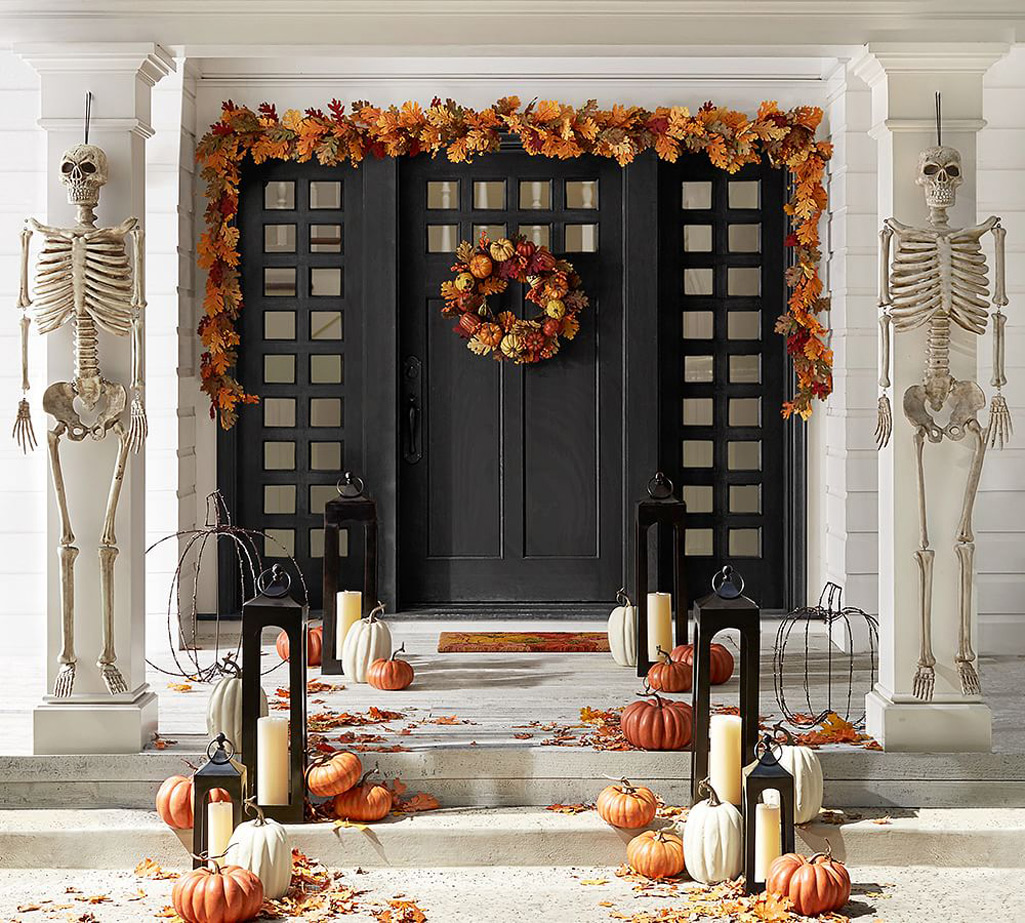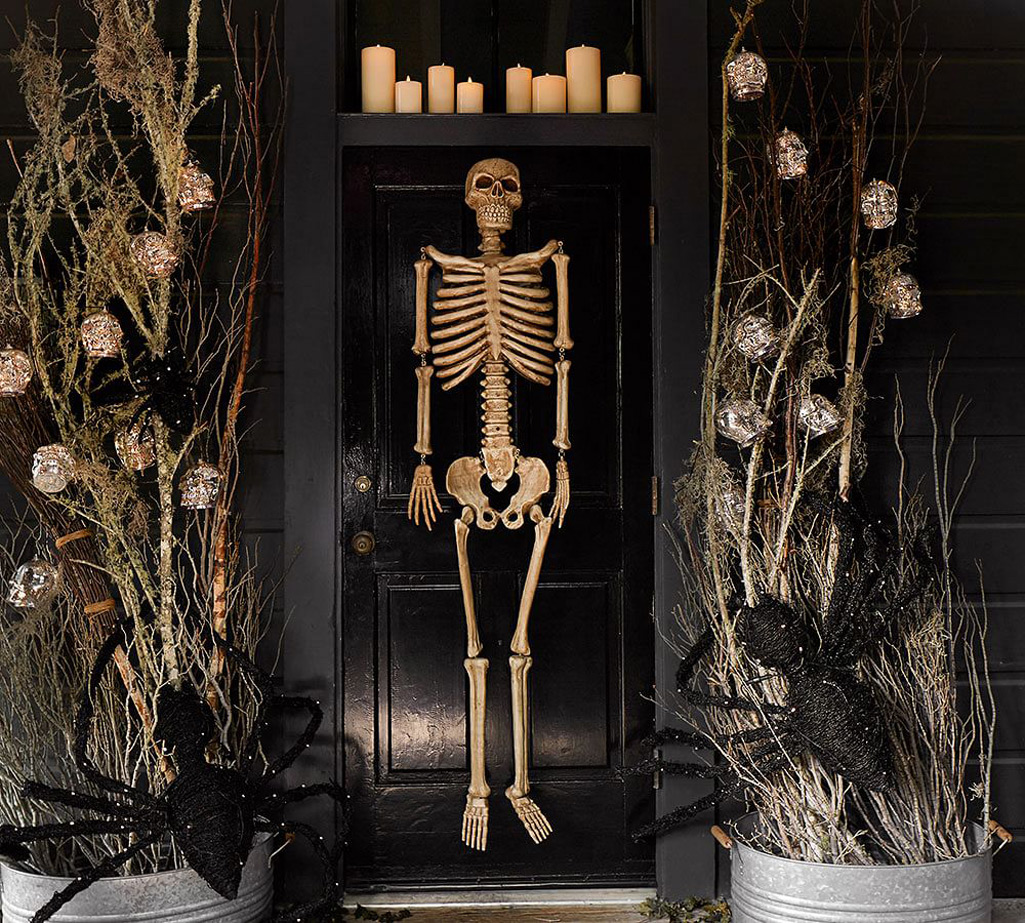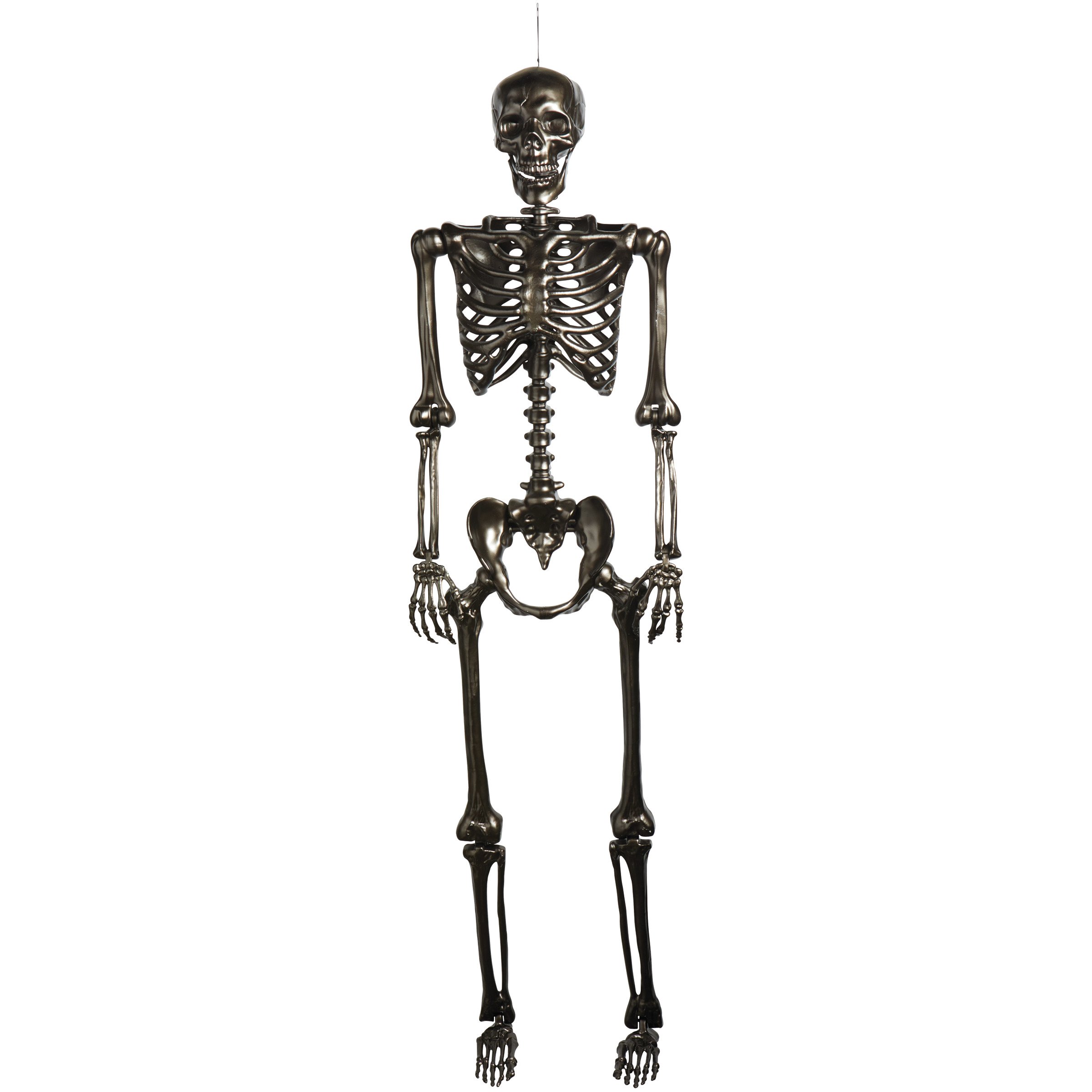Lifesize Posable Skeleton - A Guide For Artisans
Sometimes, getting the precise shape and feel for a display piece can be a bit of a puzzle, can't it? Many folks who work with animal forms, whether for art, education, or even for setting up displays in places like museums, often find themselves thinking about how to get every curve and every angle just so. It's about making something look truly alive, even when it is not, and that often means having a really clear picture of the underlying structure. This kind of work, you know, it asks for a deep look at how things are put together.
You might spend quite a bit of time, as a matter of fact, going through beginner guides, reading up on how to handle a large animal form, and checking out different teaching materials. It’s a bit like learning any craft, where you gather all the pointers you can before you even start. There are often videos you can get that talk about your particular subject, offering a visual way to pick up new tips and tricks. All this preparation, it just helps you feel more prepared for the work that is ahead.
Then there is the actual putting together of things, which can bring its own set of challenges. As someone once said, it is always a good idea to get your basic structure ready before you attach anything to it. This simple piece of advice can save you a lot of trouble later. Trying to make a finished piece fit into a display space that is already set up, well, that can be a truly frustrating experience. Having a good plan and the right tools, it really does make a significant difference, you know.
Table of Contents
- What Makes a Lifesize Posable Skeleton So Helpful?
- How Does a Lifesize Posable Skeleton Fit into Your Process?
- Finding the Right Lifesize Posable Skeleton for Your Needs
- Looking at a Lifesize Posable Skeleton in Action
What Makes a Lifesize Posable Skeleton So Helpful?
Think about the times when you are trying to shape something, perhaps a large animal form, and you are not quite sure how the muscles would lay or how the body would bend. It is a common challenge for those who work with animal displays or even with artistic representations. A full-size, bendable skeleton model can become a truly valuable tool in these situations. It gives you a solid reference, something you can move around and see from all sides. This kind of physical model, you know, helps clear up a lot of questions about how a living creature holds itself.
Having a physical representation, something you can put your hands on, just makes a big difference. You can try out different positions, see how the bones would sit, and get a feel for the natural flow of the body. This is especially true when you are working on a piece that needs to show movement or a particular stance. Without a guide, you might find yourself guessing a lot, and that can lead to shapes that just do not look quite right. A bendable skeleton, it helps you avoid those kinds of missteps, giving you a strong foundation for your work.
It is almost like having a silent teacher right there with you, showing you how things connect. You can look at the joints, how they pivot, and how the different parts of the frame relate to one another. This visual aid is very helpful for anyone aiming for a high level of accuracy in their creations. So, when you are aiming for something that looks true to life, a full-size, bendable skeleton can be a truly wonderful resource.
- Reece Witherspoon
- Elizabeth Hurley Nude Naked
- Christina Carano
- Charlotte Queen Charlotte
- Tree Hill Actors
Getting the Form Right - The Role of a Lifesize Posable Skeleton
When you are working with something like a large animal skin, say a Kodiak brown bear or a goat, getting the shape underneath just right is a very big deal. You want the finished piece to look natural, like the animal is simply resting or moving. Sometimes, you might try to fit the skin onto a pre-made shape, and it just does not seem to line up. You might find that there is too much skin in one spot, or that a leg just looks a little odd, you know, not quite in the right place.
This is where a full-size, bendable skeleton model can really come into its own. You can use it to figure out the exact pose you want before you even begin to shape your underlying structure. By bending the skeleton into the desired position, you get a clear blueprint of how the animal’s frame would sit. This helps you to build your base with precision, making sure it matches the natural lines of the creature. It is a way to remove a lot of the guesswork from the initial stages of your project.
Imagine trying to make a closed-mouth beaver mount, for instance. Do their mouths close all the way, or do you need to add a jaw insert or teeth because they always show a bit? These kinds of specific questions about how an animal’s features appear can be answered by looking at a bendable skeleton. It provides a visual guide for those small but important details that make a finished piece look truly believable. It helps you understand the inner structure, which then guides your outer shaping, so to speak.
Why a Lifesize Posable Skeleton Helps with Tricky Parts
Some parts of an animal's body are just trickier to get right than others. The way a shoulder sits, or how a hip bone connects to the leg, can be quite subtle. If you get these parts wrong, the whole posture of your piece can look off. This is where having a full-size, bendable skeleton model can really shine. You can manipulate its joints, seeing how they move and what angles they create. This helps you understand the underlying mechanics of the animal's form.
When you are dealing with something like the back legs of an animal, for example, it is easy for them to look a little "weird" if the internal structure is not correctly represented. A skeleton model lets you see how the bones of the leg connect to the pelvis, how the knee bends, and how the foot would naturally rest. You can position the skeleton in various ways to study how the muscles would attach and how the skin would drape over those bones. This kind of hands-on study is truly invaluable for getting those difficult areas just right.
Consider the problem of having too much skin for a form. This often happens when the underlying shape does not quite match the skin's natural contours. By using a full-size, bendable skeleton, you can create a form that perfectly matches the skeleton’s pose, which in turn helps you fit the skin more accurately. It is a way to ensure that the final piece has the correct proportions and a natural appearance, avoiding those frustrating moments when things just do not seem to line up as they should. It makes the whole process smoother, you know.
How Does a Lifesize Posable Skeleton Fit into Your Process?
Integrating a full-size, bendable skeleton into your workflow can change how you approach your projects. Instead of just relying on pictures or drawings, you get a three-dimensional guide that you can touch and move. This kind of physical reference allows for a much deeper understanding of animal anatomy and posture. It becomes a central piece in your preparation, helping you visualize the finished product long before you even start the actual construction. It is a bit like having a live model, but one that stays perfectly still and lets you adjust its pose as much as you need.
For those who are just starting out, or even for seasoned professionals looking to refine their methods, a full-size, bendable skeleton offers a unique way to learn. You can spend hours just moving its parts, observing how the different bones interact. This hands-on learning can solidify your understanding of animal structure in a way that books alone might not. It helps you build a mental library of poses and anatomical details, which you can then draw upon for future projects. So, it is a very practical addition to any serious artisan's collection of tools.
When you have a skin, like a Kodiak brown bear skin that is in really good shape, you want to make sure you do it justice. A full-size, bendable skeleton helps you plan the most natural and appealing pose for that particular skin. You can test out different ideas, seeing which stance best highlights the animal's features and the quality of the fur. This level of planning helps ensure that your final piece is not just accurate, but also truly striking. It is a step that can really lift the quality of your work, actually.
Using a Lifesize Posable Skeleton for Pre-Builds
The idea of pre-building your base before you mount anything is a very sound one. It means you get the core structure ready, solid, and in the right shape, separate from the actual skin or outer material. This way, you can make sure the foundation is perfect before you commit to the final assembly. A full-size, bendable skeleton is an incredibly helpful tool for this initial phase. You can position the skeleton exactly how you want your final piece to appear, and then build your base directly around it or using it as a direct reference.
This method helps to avoid the frustration that can come from trying to make a finished, mounted piece fit into a fixed display or habitat. If your base is already perfectly shaped and posed, the outer material will simply drape over it as it should. The skeleton gives you the exact dimensions and angles you need for your underlying structure. It acts as a template, guiding your hands as you sculpt or construct the form. This can save a lot of time and rework later on, you know, when adjustments become much harder to make.
For instance, if you are working on a beaver mount and are concerned about how the mouth will look, you can pose the full-size, bendable skeleton’s jaw to see the natural gap or closure. This insight helps you build the jaw structure of your base correctly from the start, perhaps indicating if you need to plan for an insert or not. It is all about getting those internal details accurate, which then makes the external appearance much more convincing. So, it really does simplify the initial stages of your project.
A Lifesize Posable Skeleton for Learning and Teaching
Beyond its use in direct construction, a full-size, bendable skeleton serves as a wonderful educational aid. For someone just starting out in the art of animal forms, spending a lot of time with one of these skeletons can be like attending a private anatomy class. You can learn about the different bones, how they connect, and how they contribute to the overall shape and movement of an animal. This kind of hands-on learning helps to build a deep understanding that is hard to get from books alone.
For instructors, a full-size, bendable skeleton is a truly fantastic teaching tool. You can use it to demonstrate specific poses, explain muscle attachment points, or show how different parts of the body move in relation to each other. It provides a clear, three-dimensional example that students can observe and interact with. This makes complex anatomical concepts much easier to grasp. It is a visual aid that speaks volumes, so to speak, helping to bridge the gap between theory and practice.
Think about the event that happened on Saturday, August 15th, where Mark Vitch from Schoharie, New York, was mounting a full-size whitetail at Bob's Wildlife Sports & Educational Museum. In a setting like a museum, a full-size, bendable skeleton could be used to prepare for such a demonstration, or even be part of the educational display itself. It could show visitors the internal structure of the animal being worked on, adding another layer of insight to the demonstration. This kind of direct observation and explanation can make a lasting impression on learners and visitors alike, you know.
Finding the Right Lifesize Posable Skeleton for Your Needs
When you consider getting a full-size, bendable skeleton, it is worth thinking about what kind of animal forms you typically work with. Skeletons come in different animal types, reflecting the varied structures of different creatures. A skeleton designed for a large mammal will be quite different from one for a smaller animal, for instance. Making sure you pick one that matches your usual subjects will make it much more useful to you. It is about getting the right tool for the job, after all.
You might also think about the materials the skeleton is made from. Some are quite sturdy and meant for frequent handling and posing, while others might be more for display. If you plan to move and adjust your full-size, bendable skeleton often to help with your projects, you will want one that can stand up to that kind of use. Looking into the flexibility of the joints and how well they hold a pose is also a good idea. This ensures that the skeleton remains a helpful guide throughout your work.
For those who might be looking for specific items, like a full-size goat form, a corresponding full-size, bendable skeleton could be an excellent reference. It helps you understand the unique bone structure of that animal, which is important for achieving an accurate and lifelike representation. Having access to this kind of specific anatomical guide can really elevate the quality of your finished pieces. So, it is a practical consideration for anyone serious about their craft.
Considering a Lifesize Posable Skeleton for Different Animals
Animals, as you know, come in a wide array of shapes and sizes, each with its own distinct skeletal structure. A full-size, bendable skeleton for a large predator, like a bear, will have different proportions and bone arrangements compared to, say, a goat or a deer. When you are working with a specific animal skin, such as a full-size Kodiak brown bear skin, having a skeleton that mirrors that animal's form can be incredibly helpful. It provides a direct, accurate reference for the underlying shape.
This is especially true when you are trying to capture the subtle differences between species. The way a bear’s spine curves, or the angle of a goat’s leg bones, can be quite unique. A full-size, bendable skeleton allows you to study these specific features up close. You can see how the joints articulate and how the overall frame supports the body. This kind of detailed study is very important for creating pieces that are not just generally accurate, but specifically true to the animal you are representing.
So, if you are looking for a full-size goat for a project, a corresponding full-size, bendable skeleton would be a very wise addition to your tools. It helps you understand the natural stance and movement of that particular animal, making it easier to create a form that looks just right. It is about getting those fine details correct, which makes all the difference in the finished piece. This kind of specialized reference can really make your work stand out, actually.
Looking at a Lifesize Posable Skeleton in Action
Seeing a full-size, bendable skeleton being used in a practical setting can truly open your eyes to its value. Imagine watching an expert mount a full-size whitetail, as Mark Vitch did at Bob's Wildlife Sports & Educational Museum. If a skeleton were part of that demonstration, you would see how the artist uses it to guide the placement of every part, ensuring the animal’s posture is natural and believable. It is a powerful way to understand the process, to see the inner workings of the art.
When you are dealing with a valuable skin, like one that is in excellent condition, wildlife gallery tanned, rehydrated, and frozen, you want to make sure you treat it with the utmost care and precision. A full-size, bendable skeleton helps you plan every step, from the initial shaping of the base to the final positioning of the limbs. It helps you visualize the finished piece, making sure that the skin will fit perfectly and that the animal’s form will be represented accurately. This kind of detailed planning helps to protect the quality of your material.
The frustration of having too much skin or finding that the back legs look weird can be greatly reduced by using a full-size, bendable skeleton. It allows you to adjust and refine your underlying form until it perfectly matches the natural contours and movements of the animal. This means less adapting a mounted specimen to a fixed habitat, and more building a habitat that perfectly suits your specimen. It is about working smarter, using the right tools to achieve the best possible outcome for your piece, you know.

Mr. Bones - Lifesize Outdoor Skeleton

Mr. Bones - Lifesize Outdoor Skeleton

Destination Holiday Halloween Lifesize Posable Skeleton - Slate - Shop